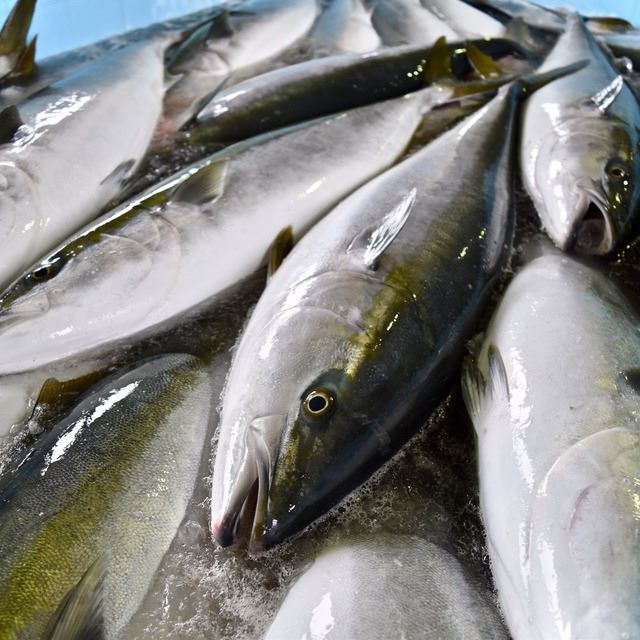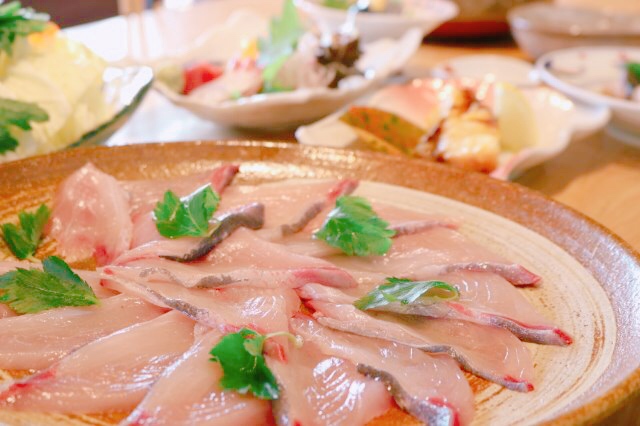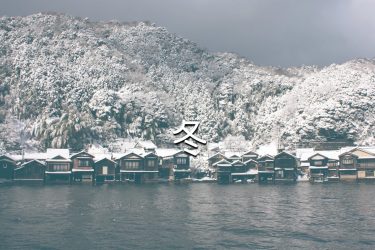We will deliver event information for winter in Ine (January-March). After all winter in Ine is cold yellowtail. Cultured yellowtail will start shipping around November, but natural yellowtail will be at its peak in December, which is a little later. It is very popular to eat yellowtail shabu-shabu with ponzu sauce after being rubbed by the rough waves of the cold Sea of Japan in the middle of winter!
November-February Ine Yellowtail


Ine Town is one of the three major yellowtail fishing grounds in Japan
Japan’s three major yellowtail fishing grounds are Himi City, Toyama Prefecture, Goto Islands, Nagasaki Prefecture, and Ine Town, Kyoto Prefecture. Most of the yellowtails that spent the summer in Hokkaido began to move south toward the Sea of Japan in late autumn when the water temperature dropped, and by the time they reached the Hokuriku and Tango regions, which were the passing points, they grew into delicious yellowtail with good quality fat. I am. Yellowtail is also famous as a successful fish whose name changes as it grows (in Kansai, “mojako (fry)-> wakana-> tubas-> hamachi-> margo-> yellowtail”). In recent years, the development of aquaculture technology has been remarkable, and it has been traded at a high price as a brand yellowtail.
Tango is the “birthplace” of yellowtail shabu-shabu
As mentioned above, Ine Town has a large catch so that it can be counted as one of the three major fishing grounds in Japan, and it has long been a custom to eat yellowtail in the Tango region in winter. Its taste was so much that it was called the best in Japan in the “Honchoshokan” written by the doctor “Hitsudai Hitomi” in the early Edo period. There are various theories all over Japan, but it is said that this oil shop in Ine Town is the origin of shabu-shabu.
Winter lucky charm “Buri Shabu”
Tango’s food culture that eats yellowtail on celebration days Yellowtail is a rising fish that grows up to 80 cm or more (10 kg or more), and in the Tango region, it is a “lucky thing” that “progresses” and “grows big”, such as New Year and birthdays It is customary to behave as a celebration of. Also, on the day when the children who were out in the city came home to their parents’ home, they could surround the shabu-shabu with a family gathering. Furthermore, as I recently learned, some people bring a yellowtail to celebrate the opening of the store and the celebration of the XX anniversary. In Tango in the middle of winter, the daylight hours are short and the amount of snowfall is large, so I often eat rice at home without going out too much. The custom of eating around a warm pot with the whole family on a cold day may have made “Buri Shabu” take root in this area.
Yellowtail shabu
Although it depends on the shop, Tango yellowtail shabu-shabu is characterized by its thin width and large area. It is best to let the hot soup stock pass through the body and heat only the surface. Some people may have the image of removing excess fat with soup stock, but the yellowtail caught in Tango (especially Ine yellowtail) does not smell like fish and does not feel greasy. Of course, the condition varies depending on the conditions such as how to tighten and store when landing, but Tango fishermen and chefs are familiar with these things.
Yellowtail sashimi
It depends on the shop, but in contrast to yellowtail shabu-shabu, the body is thickly cut. The taste of yellowtail with firm fat spreads in your mouth. Freshly caught yellowtail may feel crunchy and a little hard. On the contrary, the body of yellowtail that has been aged for several days is soft and deepens in taste. Many fishermen prefer to eat aged yellowtail that has been aged for more than a week. I think that this is the preference of each person, so please refer to it as a trivia.
Yellowtail radish
It is a traditional Japanese dish in which the umami exuded from the body of yellowtail and ara is absorbed by the radish, and the umami of the radish matches the umami of the yellowtail. White rice goes on with my personal favorite dish. Ine yellowtail has no odor and has good quality fat, so the yellowtail radish that has exuded from this yellowtail is an unbearable dish. I don’t think there are many restaurants that serve it, but it is often included in the course meals of yellowtail shabu-shabu offered at inns.
Recommended Ine shop where you can eat cold yellowtail
| name | home page | contact information | Fee |
|---|---|---|---|
| Wadatsumi Sushi Restaurant (WADATSUMI) | http://funayabiyori.com/food/ | 0772-32-1710 | Yellowtail shabu-shabu 3,300 yen (tax included) ~ |
| Restaurant Funaya | – – | 0772-32-0680 | Yellowtail shabu course 3,780 yen ~ |
| Restaurant oil shop | – – | 0772-32-0750 | Yellowtail shabu-shabu 4,320 yen ~ |
Recommended Ine inn where you can eat cold yellowtail
| Inn name | home page | Fee |
|---|---|---|
| Funaya no Yado Nagahama | http://ine-kankou-jp.check-xserver.jp/wp/inn/nagahama | From 15,000 yen |
| Funaya no Yado Kurata | http://ine-kankou-jp.check-xserver.jp/wp/inn/kurachu | From 18,000 yen |
| Fisherman’s inn Shibata-so | http://shibata-sou.com/ | From 16,700 yen |
| Innstore of Funaya | http://www.ine-kura.com/ | From 33,000 yen |
| Funaya no Yado Kagiya | http://ine-kagiya.net/ | From 31,000 yen |


